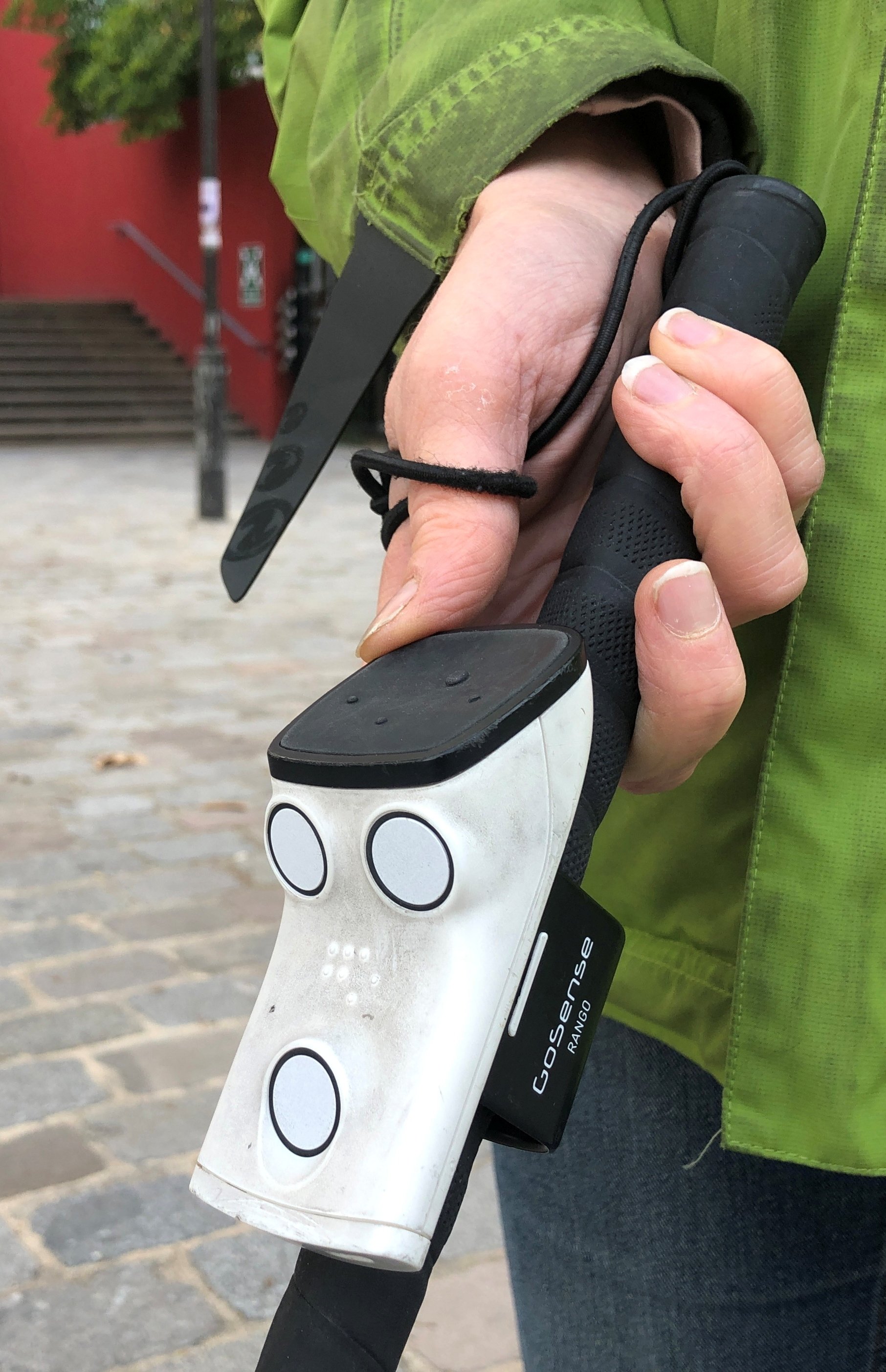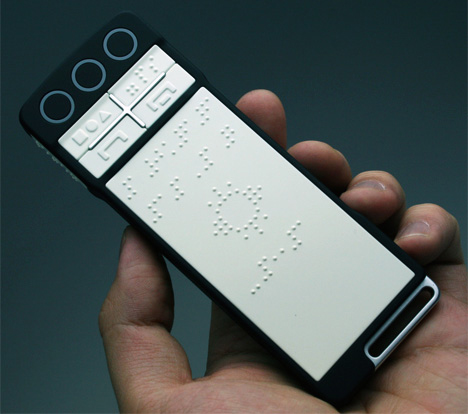Assistive Technology for the Blind: Solutions to Transform Lives
Assistive Technology for the Blind: Solutions to Transform Lives
Blog Article
Discover Ingenious Tools Developed for the Aesthetically Damaged
The development of innovative tools for the aesthetically impaired represents a considerable development in accessibility and self-reliance. Technologies such as smart glasses with AI abilities and mobile applications designed to supply auditory summaries are reshaping daily experiences for individuals.
Smart Glasses for Navigating

Smart glasses made for navigation are changing the method visually impaired people engage with their environment. These advanced devices make use of a combination of cam technology, fabricated knowledge, and auditory comments to offer real-time information regarding surroundings. By using barrier detection systems, clever glasses can signal individuals to potential hazards, enabling safer wheelchair in both strange and acquainted setups.
The combination of GPS modern technology further boosts navigation capabilities, allowing users to obtain auditory directions as they relocate. This hands-free approach not only cultivates freedom yet additionally encourages visually damaged people to browse metropolitan landscapes with boosted self-confidence. Furthermore, several wise glasses are outfitted with features that recognize landmarks and street signs, supplying contextual info that enhances the individual experience.
Moreover, the development of these gadgets is consistently progressing, with business functioning to improve the accuracy of item recognition and broaden the variety of navigational attributes. As wise glasses become much more easily accessible and affordable, they hold the potential to substantially change daily life for visually impaired customers. Eventually, these ingenious tools stand for a critical action towards inclusivity, offering boosted mobility and a higher sense of autonomy for people browsing the world around them.

Mobile Apps for Daily Living
Just how can mobile applications enhance the day-to-day lives of visually damaged individuals? Mobile apps are reinventing the way aesthetically damaged individuals navigate their environments, take care of daily jobs, and gain access to details. These applications provide important support with different performances, fostering independence and improving quality of life.
A number of innovative mobile apps are created particularly for everyday living. Apps like Be My Eyes link aesthetically damaged users with sighted volunteers using video clip phone calls, allowing them to obtain real-time support with tasks such as reading labels or browsing unfamiliar spaces. Seeing AI, created by Microsoft, uses fabricated knowledge to define environments, reviewed text, and determine things, efficiently changing a smartphone into a powerful device for daily assistance.
Furthermore, navigating apps customized for the aesthetically impaired, such as Aira and BlindSquare, use audio-based directions and ecological details, enabling users to traverse their environments safely and confidently. Beyond navigation and prompt support, mobile apps likewise sustain organization and task monitoring, with attributes that help users establish pointers, produce to-do listings, and track visits. In recap, mobile applications act as vital sources, encouraging visually damaged individuals to lead more independent and satisfying lives.
Wearable Technologies for Assistance
Empowerment with modern technology is significantly evident in the world of wearable devices made to help visually impaired individuals. These cutting-edge tools incorporate seamlessly into every day life, enhancing navigation and providing essential comments to individuals. Smart glasses geared up with electronic cameras can recognize faces and review message aloud, enabling individuals to interact more with confidence in social and professional setups.
An additional noteworthy improvement is using haptic responses systems in wearable devices. These systems utilize vibrations or various other tactile signals to share details about the customer's environment, such as obstacles or modifications in surface, enhancing flexibility and safety and security. Wearable technologies likewise include wristbands that link to mobile phones, alerting customers to notices with refined resonances, therefore boosting connection without reliance on visual cues.
As these modern technologies remain to develop, they are not only boosting independence for visually impaired people however additionally fostering a greater feeling of incorporation in culture. By bridging the gap between difficulties faced in day-to-day living and the capacity for freedom, wearable technologies work as crucial tools in the mission for equality and empowerment for those with visual disabilities.
Audio Description Devices
Sound summary tools play an essential duty in boosting availability for aesthetically damaged individuals, providing them with the ability to engage with visual media. Screen readers for the blind. These devices supply narrated descriptions of vital aesthetic elements in films, television shows, and live performances, guaranteeing that customers can totally comprehend the context and feelings communicated via visuals
Audio summary can be incorporated into different systems, consisting of streaming solutions, cinema testings, and live cinema. Lots of prominent streaming solutions currently include audio description as an ease of access function, permitting viewers to choose it quickly. Along with mainstream media, specialized apps additionally exist, supplying audio descriptions for art exhibits, museums, and other cultural occasions.
The performance of audio summary pivots on the ability of the narrators, that need to convey aesthetic details succinctly without diminishing the original sound. Developments in this area are also leading the way for more personalized experiences, where users can readjust the level of detail and pacing according to their preferences.
Braille Innovations and Instruments
Braille gadgets and innovations have actually dramatically transformed the method aesthetically damaged individuals connect with text and info. Modern advancements have actually brought about the advancement of functional devices that improve proficiency and self-reliance among individuals. Especially, Braille present modern technologies have advanced, permitting for dynamic reading experiences. These devices convert digital message into Braille, making it possible for users to access a vast range of information on computer systems, smart devices, and tablet computers.
Additionally, portable Braille notetakers integrate standard Braille input with contemporary capabilities, promoting note-taking, organizing, and file editing and enhancing on the move. Braille displays and notetakers. These compact tools typically include text-to-speech capacities, linking the void in between Braille and auditory details
Furthermore, ingenious Braille printers have emerged, permitting users to produce Braille labels, papers, and academic products successfully. This availability promotes greater participation in instructional and professional environments, ultimately promoting inclusivity.
Moreover, eyeglass frames for women research study right into smart Braille innovations continues to expand. Tools that include fabricated intelligence are being why not look here explored to provide real-time navigation support and contextual info, boosting the user experience in diverse settings. Overall, these technologies show a commitment to encouraging visually damaged people via technology, guaranteeing they can quickly accessibility and engage with the world around them.

Final Thought
The improvement of innovative tools for the aesthetically damaged dramatically enhances self-reliance and high quality of life. These modern technologies not only foster greater inclusion yet also advertise autonomy in everyday tasks, inevitably adding to a more easily accessible and equitable culture for aesthetically damaged people.
As clever glasses end up being extra economical and obtainable, they hold the possible to dramatically change day-to-day life for aesthetically impaired customers. Mobile applications are revolutionizing the means aesthetically impaired customers navigate their settings, take care of day-to-day jobs, and Learn More accessibility information. Applications like Be My Eyes connect aesthetically impaired customers with sighted volunteers using video phone calls, enabling them to obtain real-time assistance with tasks such as checking out labels or browsing strange spaces.Additionally, navigation applications tailored for the visually impaired, such as Aira and BlindSquare, supply audio-based instructions and ecological information, enabling users to traverse their environments safely and confidently.The development of ingenious tools for the visually damaged significantly enhances self-reliance and quality of life.
Report this page